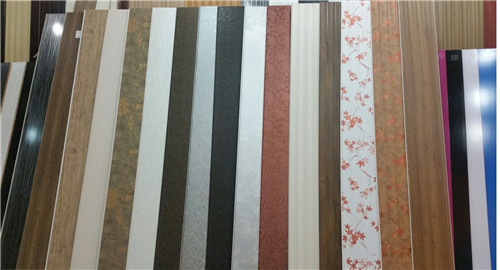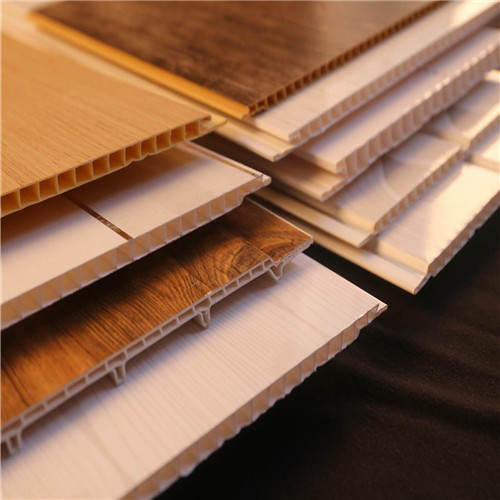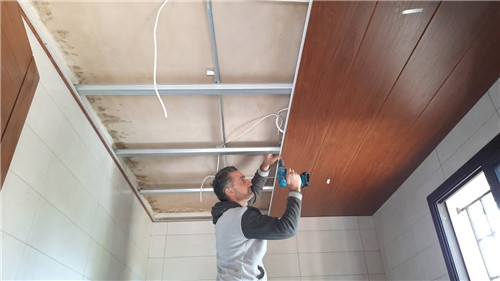PVC panels are extremely popular nowadays for use in shower enclosures and generally in bathroom renovation, replacing traditional tiling. At a low cost, ease of installation, and waterproofing provided by PVC panels, they are sure to become the preferred option for people renovating or building new shower spaces. But there are significant considerations at play here to make sure PVC panels perform well and continue looking great over the years. The idea behind this article is to delve into the pros of using PVC panels, considerations, and best practices in a shower.
Pros of Using PVC Panels in a Shower
Waterproof and Resistance to Molds
Since PVC panels are inherently waterproof, they are suitable for shower walls. Traditional tiles usually have grout in between that allows for both mold and mildew to grow. PVC panels do not have such gaps; hence, they offer a seamless, impervious surface that doesn’t allow water to seep through. Alongside this, the Mold chances of mold and mildew are reduced, hence promising a healthier bathroom.
Simple to Install
Another great feature of PVC panels is their ease of installation. They are light and can be cut to required sizes using basic tools, as can be DIY. Most PVC panels make use of a tongue-and-groove system that sees the panels click together easily. Consequently, this not only provides for much easier installation but also interlocks them in a tight seal that further waterproofs the panels.
Low Maintenance
Once installed, PVC paneling requires very minimal maintenance. Easy to clean, it only requires a wipe with a clean, damp cloth and mild detergent, unlike tiling, which may periodically need regrouting and stringent cleaning to prevent mold infestation. Their smooth, non-porous surface repels water, so it’s impossible for soap scum and grime buildup; hence, this makes them ideal in busy households.
Pocket-Friendly
Generally, the material and installation cost of PVC panels is pocket-friendlier than traditional tiles. If you want to add style to your shower space and functionality without digging too much into your pocket, then this is the route to follow. Moreover, the ease of installation may help you save on labor when you hire a professional.
Variety of Designs
The panels can be colored in various ways and even surface-textured to easily suit the aesthetics that one would want in their bathroom. Be it marble, stone, or ultra-modern looks, there will be PVC panel designs that will suit your taste. This versatility indeed allows any person to get an individual yet visually pleasing shower area that can blend with other bathroom decor.

Considerations in Using PVC Panels in a Shower
Quality and Thickness
PVC panels are not all the same. Thus, to be used in a shower, high-quality panels designed for wet areas should be used. These are usually thicker, more solid, and enduring; they can resist impact and wear well, too. It provides longevity and keeps the appearance of your shower intact.
Proper Sealing
A waterproof installation will be attained by making proper sealing around the edges and joints of the PVC panels. Run a bead of good quality silicone sealant around the edge of the panels and where the panels join the shower tray or bathtub. This action seals the tiny gaps through which the water could seep behind, leading to moist conditions that cause breast development infestation fleshing out of the substrate.
Substrate Preparation
The surface that you bond the PVC panels to has to be clean and dry with no unevenness. Sometimes, as substrate irregularities and excess moisture can reduce the effectiveness of the panels, additional backer boards or waterproofing membranes may be required to achieve a perfect surface. Proper preparation for a substrate provides secure and durable installation.
Temperature Tolerance
Because PVC panels will expand with an increase in temperature and contract with a decrease, this phenomenon could easily become a problem when using them in a shower in which hot water is commonly used. Solution: Create a small expansion gap around the perimeter of the panels that can then be finished off with trim. This gives the panels room to move in and out easily without buckling or warping, meaning a long-lasting installation.
Environmental Considerations
Though PVC panels are clean, low maintenance, and very durable, they remain plastic. The environmental effect is obvious when one takes a product lifecycle viewpoint. Seek out panels containing recycled material content or which can be recycled at the end of their use. Apart from this, consider selecting panels from manufacturers working on sustainability to reduce the ecological footprint of a renovation project.

Installation Tips
Measure and Plan
Measure the area accurately that is to be covered, and plan out the layout of the panels. This will help avoid too much wastage and give the finish a professional touch. Also, consider the installation of fixtures such as the showerhead and faucet, and plan accordingly for cutouts.
Cut to Size
Using a fine-toothed saw or utility knife, cut the panels according to the required size. One should wear safety goggles and a dust mask while handling this job. Make accurate cuts so that these fit in tightly. This is very important at corners and around any type of fixture.
Apply Adhesive
Always use good quality adhesives designed for use with PVC panels. Apply the adhesive onto the back of the panel or directly onto the wall and spread it around. The best results come from following the manufacturer’s instructions, subject to the nature of the material and characteristic features of the material.
Fit Panels
Starting at a corner, lay the first panel and press the panel firmly into place. Then install the remaining panels, snapping tightly together. Check that the panels run straight by using a level and making adjustments as you go.
Seal Joints
Seal all joints and edges with silicone sealant. Ensure most attention is given to areas where panels meet the shower tray or bathtub. Smooth the sealant into a neat finish using either a wet finger or a sealant tool. Proper sealing from penetration by water is guaranteed by appropriate installation, ensuring that the system lasts long enough over time.
Finishing Touches
Add trim or edging strips to cover expansion gaps and make the installation look good. Unlike other finishing touches that upgrade an installation’s appearance, these also seal off the edges of the panels from damage. Choose trim that works harmoniously with the design of your panels for a cohesive finish.

Conclusion
PVC panels tick all the boxes where shower walls are a concern: waterproofing, ease of installation, low maintenance, and affordability. There are a couple of ways to make sure you have a nice shower enclosure that will last a long time: purchasing good-quality panels, correct sealing, and, finally, proper installation. These PVC panels are going to help a lot in the renovation of the old bathroom or the setting of the new one—a lot of flexibility and attractiveness will be brought about by the functionality and visual appeal these panels will combine.
Incorporating PVC panels into your shower design not only enhances your bathroom’s look but also has long-term benefits in terms of low maintenance and durability. Properly selected and installed PVC panels will create a low-maintenance, modern shower haven that will easily withstand everyday use.
Know more at:
Are PVC Panels Waterproof?
Are PVC Panels Resistant to Fire?
Do PVC Wall Panel over Tile Works?
Post time: Aug-26-2024
